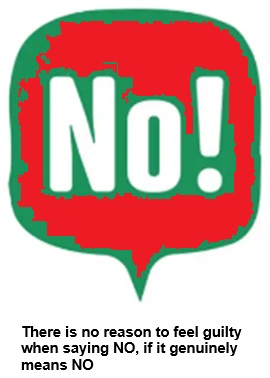Dec 14, 2025
Dec 14, 2025
A Path to Personal Empowerment
In a world that often equates busyness with success, the ability to say “no” has become an essential skill. The art of saying no is not just about refusing requests; it’s about setting boundaries, prioritizing personal well-being, and maintaining control over one’s life. Let’s explores the importance of saying no, the challenges associated with it, and practical strategies to master this crucial skill.
The Importance of Saying No
 Saying no is a powerful tool for self-preservation. It allows individuals to protect their time, energy, and resources. By declining requests that do not align with their goals or values, people can focus on what truly matters to them. This selective approach leads to higher productivity and a more fulfilling life.
Saying no is a powerful tool for self-preservation. It allows individuals to protect their time, energy, and resources. By declining requests that do not align with their goals or values, people can focus on what truly matters to them. This selective approach leads to higher productivity and a more fulfilling life.
Moreover, saying no is a form of self-respect. It acknowledges one’s limits and prevents burnout. When individuals overcommit, they risk spreading themselves too thin, which can lead to stress, fatigue, and decreased performance. By setting boundaries, they can maintain a healthy balance between work, personal life, and leisure.
The Challenges of Saying No
Despite its benefits, saying no is often challenging. Many people fear that refusing a request will lead to conflict, disappointment, or damaged relationships. This fear is rooted in a desire to be liked and accepted. However, constantly saying yes to please others can result in resentment and a loss of self-identity.
Another challenge is the internal guilt associated with saying no. People may feel that they are being selfish or unkind. This guilt can be particularly strong in cultures that emphasize collectivism and community support. Overcoming this guilt requires a shift in mindset, recognizing that self-care is not selfish but necessary for long-term well-being.
Strategies for Mastering the Art of Saying No
Example: Saying No in a Professional Setting
Imagine you are a project manager with a full schedule. A colleague asks you to take on an additional project. You recognize that accepting this request would compromise the quality of your current work and your well-being. Here’s how you might respond:
“Thank you for considering me for this project. I am currently managing several high-priority tasks and won’t be able to give this new project the attention it deserves. I recommend reaching out to [Colleague’s Name], who has experience in this area and might have the capacity to assist.”
This response is respectful, honest, and provides a constructive alternative, demonstrating that saying no can be done gracefully and effectively.
To conclude, mastering the art of saying no is a journey towards personal empowerment. It involves understanding your priorities, setting boundaries, and communicating assertively. By learning to say no, you can protect your time and energy, reduce stress, and lead a more balanced and fulfilling life. Remember, saying no is not about rejecting others; it’s about affirming your own needs and values
Illustration by RK
21-Sep-2024
More by : Shalini Vohra

|
A much needed skill in today's world. I think the key is to be assertive but polite in enforcing one's boundaries. |

|
Thank you, yes in personal life we all err sometimes but learn from our mistakes. It’s important to acquire the art of saying NO where our self respect and values are being measured. |

|
This is a fantastic and illuminating article that every professional in life should read and practice. I remember I had to say 'No' to some commitments in my service but later I understood what I did was perfect. Yes. In my personal life, I erred in some places. I had to pay a price for that. Well. Whatever, I profusely appreciate and thank the author for highlighting the importance of even saying 'No' is as important as saying 'Yes'. Thank you for enlightening the readers. |